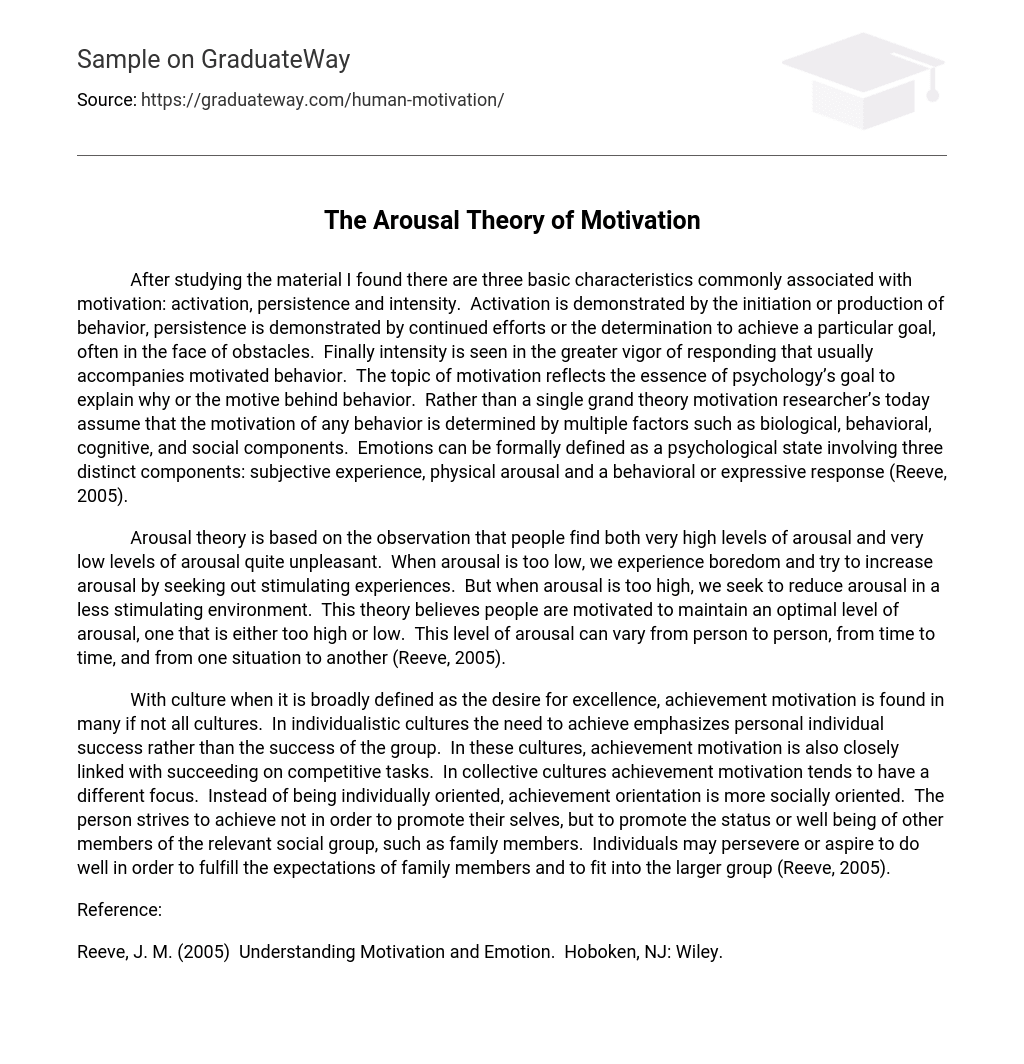After studying the material I found there are three basic characteristics commonly associated with motivation: activation, persistence and intensity. Activation is demonstrated by the initiation or production of behavior, persistence is demonstrated by continued efforts or the determination to achieve a particular goal, often in the face of obstacles. Finally intensity is seen in the greater vigor of responding that usually accompanies motivated behavior. The topic of motivation reflects the essence of psychology’s goal to explain why or the motive behind behavior. Rather than a single grand theory motivation researcher’s today assume that the motivation of any behavior is determined by multiple factors such as biological, behavioral, cognitive, and social components. Emotions can be formally defined as a psychological state involving three distinct components: subjective experience, physical arousal and a behavioral or expressive response (Reeve, 2005).
Arousal theory is based on the observation that people find both very high levels of arousal and very low levels of arousal quite unpleasant. When arousal is too low, we experience boredom and try to increase arousal by seeking out stimulating experiences. But when arousal is too high, we seek to reduce arousal in a less stimulating environment. This theory believes people are motivated to maintain an optimal level of arousal, one that is either too high or low. This level of arousal can vary from person to person, from time to time, and from one situation to another (Reeve, 2005).
With culture when it is broadly defined as the desire for excellence, achievement motivation is found in many if not all cultures. In individualistic cultures the need to achieve emphasizes personal individual success rather than the success of the group. In these cultures, achievement motivation is also closely linked with succeeding on competitive tasks. In collective cultures achievement motivation tends to have a different focus. Instead of being individually oriented, achievement orientation is more socially oriented. The person strives to achieve not in order to promote their selves, but to promote the status or well being of other members of the relevant social group, such as family members. Individuals may persevere or aspire to do well in order to fulfill the expectations of family members and to fit into the larger group (Reeve, 2005).
Reference:
Reeve, J. M. (2005) Understanding Motivation and Emotion. Hoboken, NJ: Wiley.





